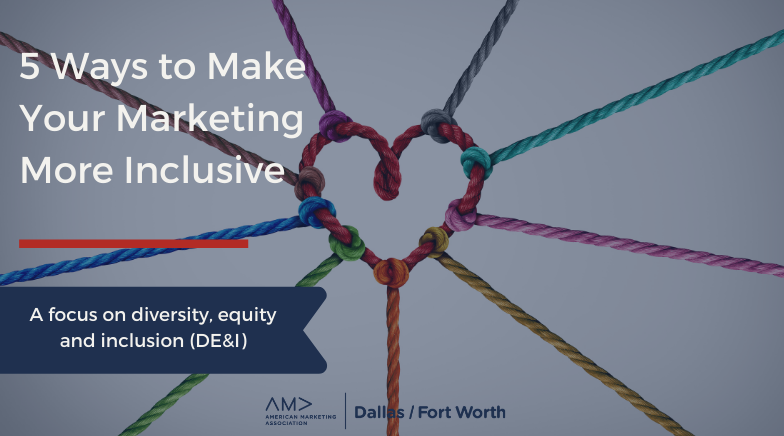There’s no better time than Pride Month to revisit some ways to support social issues and reflect your company’s diversity, equity and inclusion (DE&I) values in your marketing programs. It’s all too easy for well-meaning companies to fall into rainbow, pink, woke and other “washing” traps, so here is a quick list of tips and resources to help you foster a more inclusive brand year-round.
- Avoid the opportunistic. We get it. Everyone’s celebrating and showing support for a worthy cause, and your brand wants to too. But getting involved doesn’t just mean temporarily adding a rainbow to your logo or adding some hashtags to your social messages. Responsible marketing means striking the right balance between awareness and opportunism, and always staying aligned to your brand’s core values. Going too far by commercializing an opportunity (or even the perception of doing so) can be quickly met with backlash that will tarnish your brand’s image.
- Build a foundation for authenticity. So how do you avoid number one? As many as 90 percent of consumers think authenticity is important when deciding whether they like and want to support a brand. One-off efforts and platitudes won’t cut it. Implement a DE&I initiative at your company and follow through to ensure long-term tangible and trackable results. Your brand should live and breathe inclusivity from the leadership down to the employee level. Not sure where to start? Check out SHRM’s Guide to Developing a Strategic Diversity, Equity and Inclusion Plan.
- Be a part of the solution. Taking number two a step further, don’t just be authentic, actively make a difference — and do it without expecting something in return. Being a part of the solution means committing real time, money, and resources. And don’t make every marketing campaign component about your product, show the many ways your brand (internally and externally) is working to do good.
- Design for Accessibility. Ensure your marketing campaigns incorporate inclusive design so everyone can enjoy your brand. This practice means more than just checking the box on website best practices. Accessibility extends to strategies like labeling social media content; using certain colors in your materials to accommodate those with colorblindness; or even arranging email content so text is more readable for those with limited vision. Some useful resources you can check out to inform your strategies include We Are Colorblind, The A11Y Project and Color Review.
- Use imagery that reflects the community. Represent all the beautiful colors, shapes, sizes, abilities and experiences that make up our world in your brand imagery. Audit what you’re currently using to see if there are any inherent biases present and take active steps to update what’s outdated and not inclusive. When selecting stock photography, try sites like TONAL, Diversify Photo, or the Getty Images, Dove and Girlgaze Project called #ShowUs. Take advantage of ethnicity, age and gender search filters that can help you diversify. Also, be wary of placement so images don’t inadvertently marginalize image subjects.
Interested in exploring this topic further by sharing your ideas, knowledge and experience with others? Get involved in AMA DFW’s Special Interest Groups (SIGs) communities.
